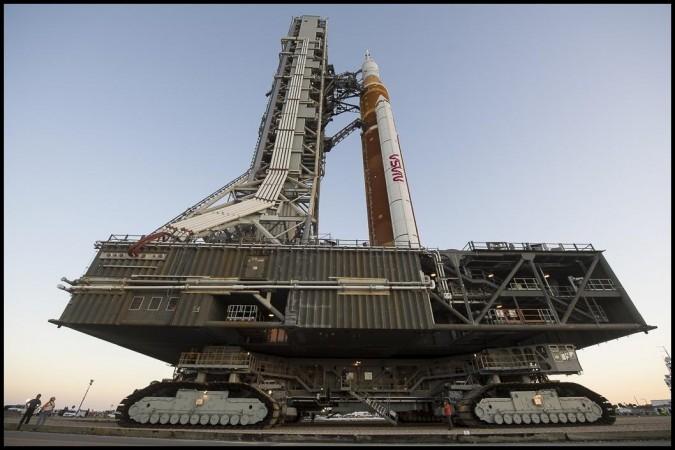NASA's Artemis 1 mega moon rocket has been rolled out for the first time on Friday and it continues its journey to the launch pad, the US space agency officials said.
The rocket and spacecraft for NASA's Artemis I mission were kept at the Kennedy Space Center's Vehicle Assembly Building (VAB) and it is on the way to Launch Complex 39B for a wet dress rehearsal test.
The integrated SLS and Orion system atop it are being rolled out on a 6.6-million-pound crawler-transporter.
The journey, expected to take between six and 12 hours, began at about 5.45 p.m. ET., and the crawler-transporter will move slowly during the trek to the pad with a top cruising speed of .82 mph, NASA said.
The Moon rocket will make a planned pause allowing the team to reposition the Crew Access Arm before continuing to the launch pad.

"Ladies and gentlemen, the world's most powerful rocket ever right here," said NASA Administrator Bill Nelson, during a live webcast of the rollout.
"It's back to the moon and then on to Mars! a Today, a new generation - not the Apollo generation, but it's the Artemis generation - is preparing to reach new frontiers.
"NASA's Artemis programme will pave the way for humanity's giant leap - future missions to Mars," Nelson added. "There's no doubt that we are in a golden era of human space exploration, discovery and ingenuity in space. And it all begins with Artemis 1."
After they arrive at the pad, engineers will prepare the integrated rocket and Orion spacecraft for a critical wet dress rehearsal test that includes loading all the propellants, NASA said.
The dress rehearsal will demonstrate the team's ability to load more than 700,000 gallons of cryogenic, or super-cold, propellants into the rocket at the launch pad, practice every phase of the launch countdown, and drain propellants to demonstrate safely standing down on a launch attempt.

The test will be the culmination of months of assembly and testing for SLS and Orion, as well as preparations by launch control and engineering teams, and set the stage for the first Artemis launch.
Artemis 1 is currently scheduled to launch no earlier than late May 2022.
The uncrewed Artemis I mission is the first flight of the SLS rocket and Orion spacecraft together. Future missions will send people to work in lunar orbit and on the Moon's surface.
With the Artemis missions, NASA will land the first woman and the first person of colour on the Moon and establish long-term exploration in preparation for missions to Mars. SLS and Orion, along with the commercial human landing system and the Gateway that will orbit the Moon, are NASA's backbone for deep space exploration.














